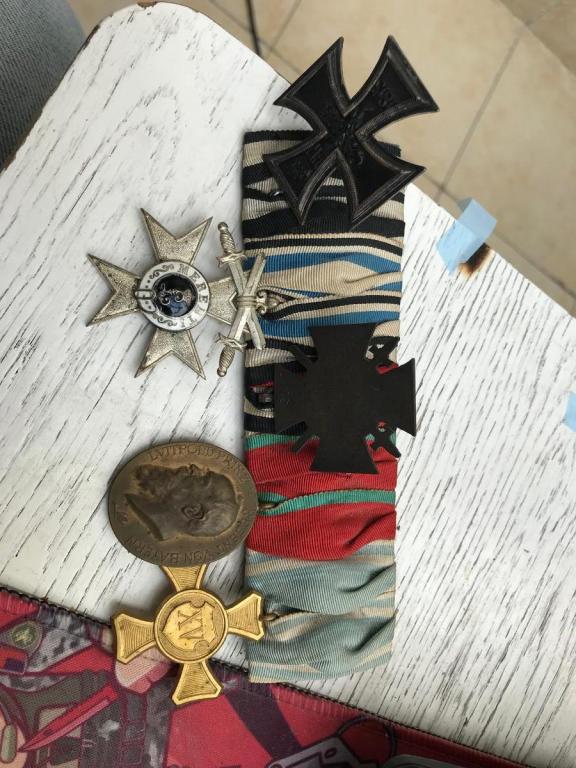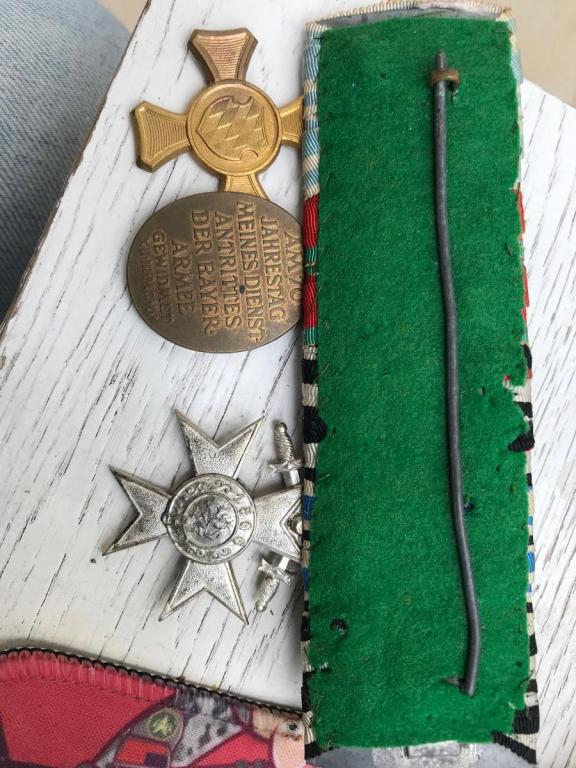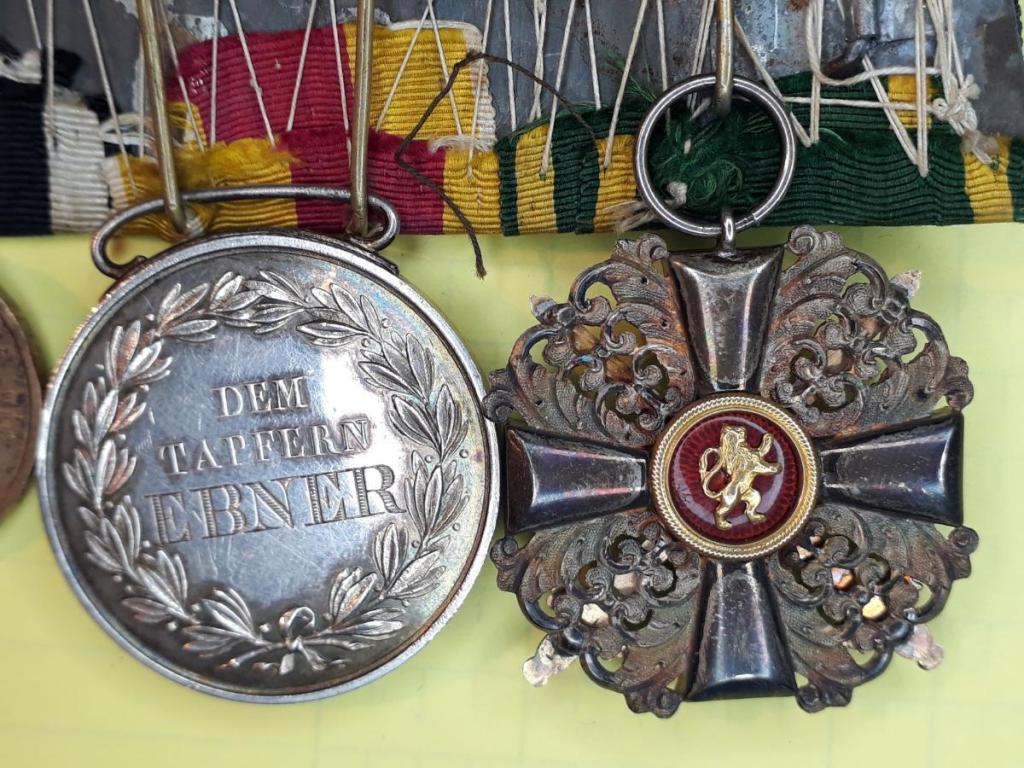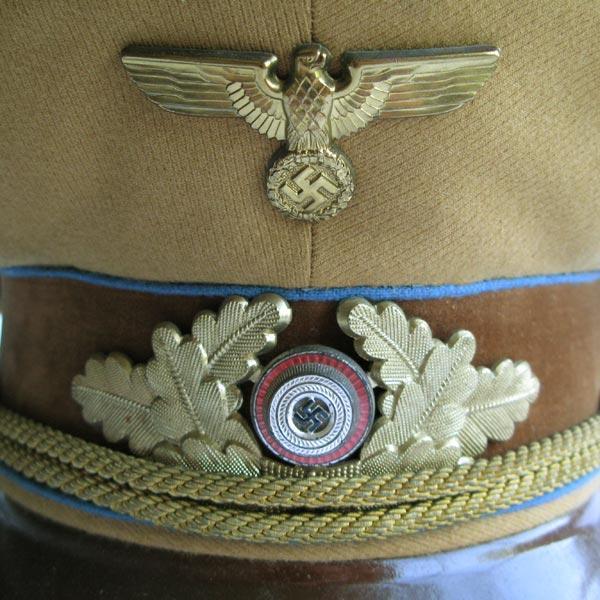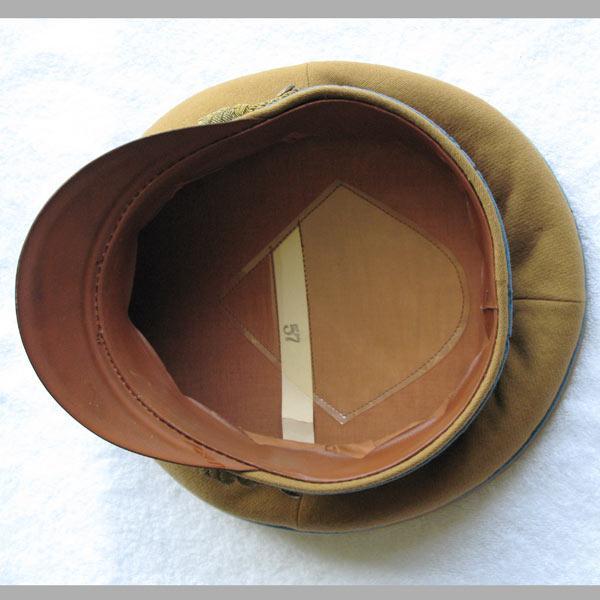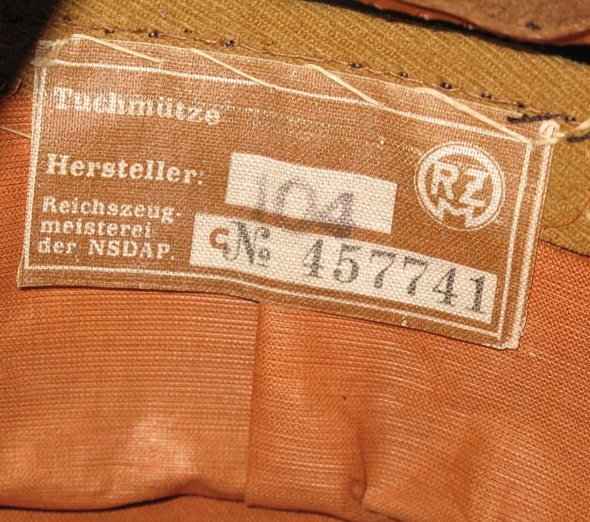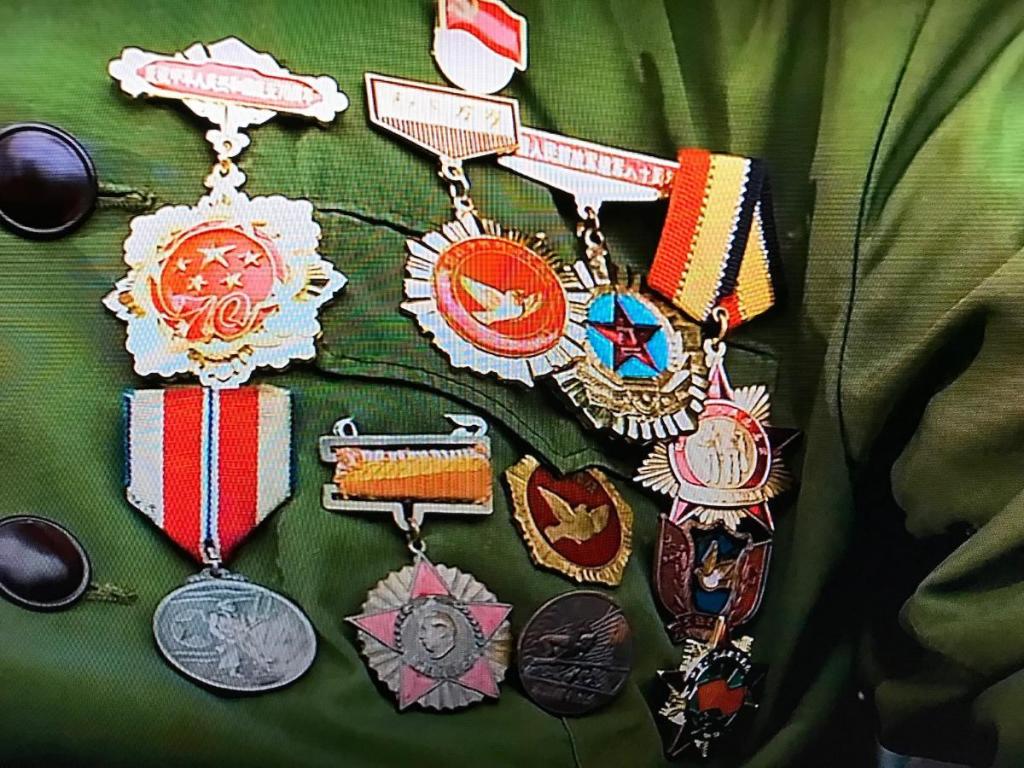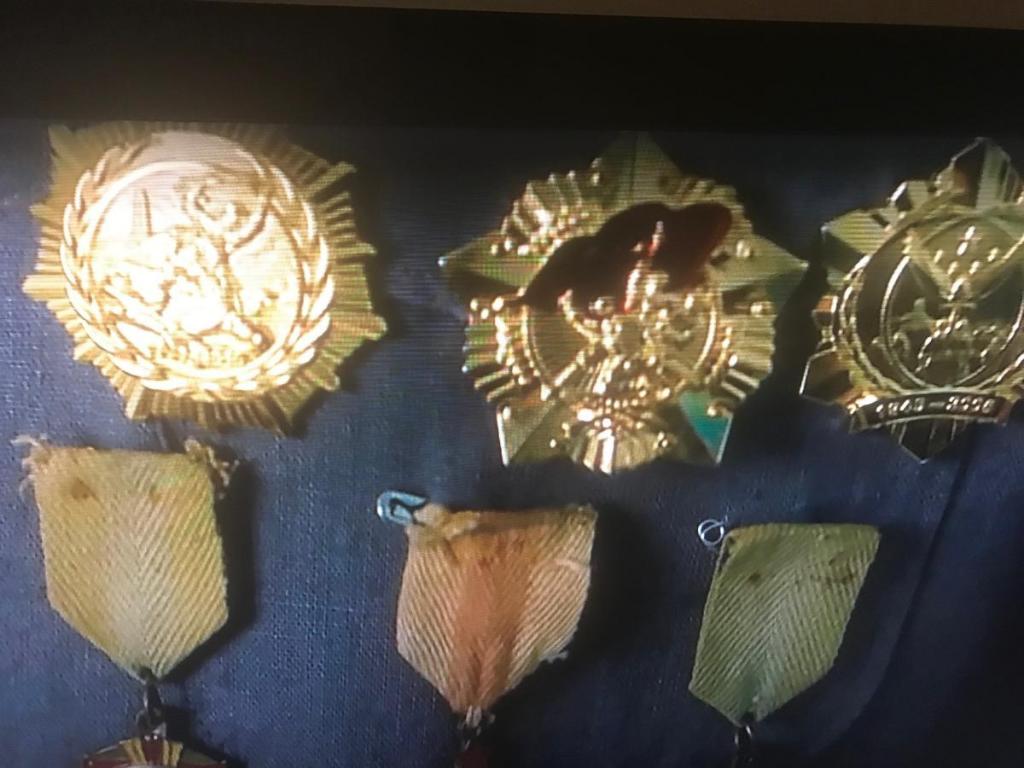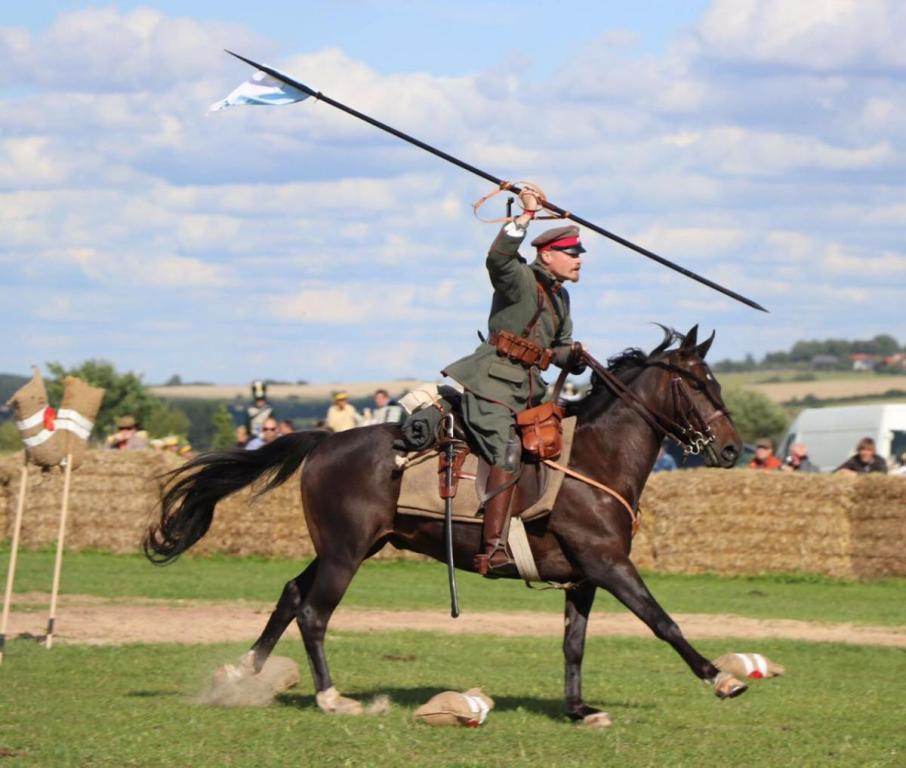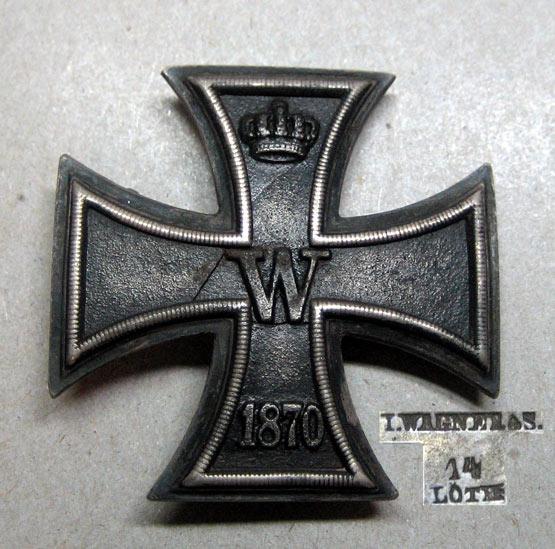-
Posts
256 -
Joined
-
Last visited
Content Type
Profiles
Forums
Blogs
Gallery
Events
Store
Everything posted by v.Perlet
-
Hello Ostrosky, with BSA I presume that you are referring to the B.S.A.P. ? regarding initial service in Matabeland and Mashonaland in the late 19th century, which would also include some extreme difficult history to research during 1960-78 such as e.g. PACHEDU. Or is your research more confined to finding, cataloguing and collecting swords? I can't open the link since I am residing in China? But maybe you get lucky - even though I presume that you are already familiar with their webpage. www.bsapolice.com www.bsapolice.org Do you still travel there, or have relationships or contacts to the white populace in the town of Rusape? Regards v.Perlet
-
Servus Walter, hm..??, also ich zweifle eure Aussagen ueberhaupt nicht an - ich hatte nur gesagt dass von allen meinen MVK's leider nur eines eine Punzierung aufweist - und zwar auf der Agraffe. Mittlerweile habe ich noch ein zweites Stueck gefunden, ein MVK X mit Krone Kl.3 ebenfalls mit GH auf der Agraffe. Ich bin mir auch nicht bewusst darueber dass ich hier irgendwelche Thesen aufstelle. Gruss Andreas
-
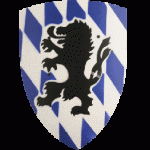
Iron Crosses as bravery awards to women
v.Perlet replied to BlackcowboyBS's topic in Germany: All Eras: The Iron Cross
yes this is the Belgium nurse (I had forgotten about the spy part) - but I don't know if this is just a nice story or a real occurrence. Regards v.Perlet -

Iron Crosses as bravery awards to women
v.Perlet replied to BlackcowboyBS's topic in Germany: All Eras: The Iron Cross
Hello BalckcowboyBS, very interesting find! - thanks for sharing. As for WW2 there are at least 30-40 documented cases of women having been awarded the EK - most prominent being Hanna Reitsch. I heard about a Belgian nurse working for a German hospital (no not he Red Baron nurse) in WW1 and receiving an EK - but I do not know if this account is verified. Regards v.Perlet -
Hello spolei, I am aware as to where to look. But unfortunately only one MVK 1.KL X, displays the manufacturer on the Agraffe - and even that one isn't easy to spot. See my MVK 2nd Kl X and sword I posted - nothing. Therefore until you mentioned this issue in your previous post and showed me the above photo, I didn't even know that swords on a MVK were marked at all - thanks, very appreciated. Regards v.Perlet
-
Servus Walter, Hello spolei Phuuu.... relieved, that surface appearance really made me nervous. Thanks a lot for your time and input - Deschler, okay I can live with that?, the pre-war part I assumed as well. What makes you say or know that the 2.Kl on the ribbon clasp is from Weis? any hints you could forward me? Thanks again and a better close up from the 2.Kl - ribbon clasp Regards v.Perlet
-
Hello gents, can some of you help me on this MVK 2nd Klasse displayed on a 5 medal clasp Unlike most of my other medals I had kept this one in a box for maybe 20 years and unearthed it yesterday. What kind of shocked me was the appearance of the coating - more like glossy white then the usual silver appearance I am used to seeing on my other MVK 2Kl. Is there something fundamentally wrong with this cross - or is it one of the Alpaka=silver plated versions, or some crude alloy core with whatever silver coating? Also any ideas to the manufacturer? Also pictured is a 2nd Klasse with crown from my cabinet (I think it's a Leser) no markings visible that displays the to me familiar silver appearance. Regards v.Perlet
-
Hello Jurgen Fritz; it's actually the other way around, that is why I pointed the Koppel issue towards the Koppelschloss. 50mm was only a standard till 1895 in e.g. the Bavarian army. From then on in order to reduce weight on the filed gear the buckle was reduced to 45mm. Initially the buckles were made of brass (very heavy) and from 1914 buckles were made of steel and later as already described in lighter alloys - due to the overall economic situation in Germany. Since belt-buckles were reduced to 45mm - naturally the belt was adjusted/reduced to 45mm as well and as far as I know also by eliminating the overlapping length of belts - meaning the belts were also shortened. What many people underestimate or totally forget is that Germany due to an highly efficient naval blockade was entirely cut of from any essential import of goods right down to food or nutrition items from 1915 onward. Hunger and even starvation was far more serious in WW1 then in WW2. So any item was reduced in size and weight - including food rations. In regards to your reference towards the Bundeswehr, you need to keep in mind that this Koppel is only worn on the Parade-dress or official commemorative occasions including the wearing of a steel-helmet - it is not allowed to be worn on the Ausgehanzug used for non-combat associated tasks and is certainly not part of the combat fatigue dress. I happened to have served in a Bundeswehr unit - who's WW2 veteran commander obtained the special permission in the late 70's to wear this Koppel with the Ausgehanzug during Guard-duty. The day he left the unit in the early 80's, the Koppel left with him. AFAIK the only unit in the Bundeswehr to do so. And we hated to wear it, because it was heavy and uncomfortable (you couldn't really bend/move around with your body without being hindered by the Koppel) The 70's/80's Koppelschloss and IIRC the belt was far more heavier then the version from the 90's onward. As for issues related to Adolf - I am totally not in that league, or posses any knowledge towards collectables of that period, - sorry can't help you on that one. Regards v.Perlet
-
Hello nickstrenk, my reply comes a bit late - due to me having joined this forum just a month ago; What I would like to indicate to you is in regards for you maybe having the intention to further collect or purchase PRC medals. Basically there are 4 groups of medals in China, referring to the time line 1949 - 1969 1. original war awards - more or less impossible to come by - and if not less then a US$500 a piece for the lowest class - top awards are easily fetching US$ 2000-5000. 2. replacement awards of original war awards - only for former military members or para-military associations. 3. Millions and millions if not billions of commemorative medals - either modeled after original war-awards or to their own intended purpose - e.g. 10 years anniversary of steelworker union 1959, or e.g. First pioneer kindergarten of Taiyuan in honor for the liberation of Taiyuan by the PLA in 1949 - issued 1964, and so on and on. These commemorative-civilian medals are due to the huge amount produced between 1949-1969 circulating in the market available from US$ 10cent to maximum 50cents (depending on ones bargaining skill or Chinese language skill) 4. From extreme poorly to very professional done fakes in view of no.1 and no.2 The one you posted Price in China - US$10cents to US$ 50cents and not US$130 as supposedly sold for, on the link you gave. Many of these commemorative medals are mounted on red ribbon carrying clasps - since they give a better appeal to nowadays buyers - these clasps and medals without a pin are 99.99% fake - simply due to the issue of original commemorative medals all possessing a needle pin on their reverse-just as all these Mao badge pin-ons. I would yet have to come a cross a 1949-1969 photo depicting a civilian wearing a civilian commemorative medal/badge or a Mao badge on a ribbon clasp. There are hundreds of TV documentaries on the Chinese TV channels (1930-1953) - the photo I posted are taken from the TV - since my own documentation about war-awards from 1949-53 isn't finished yet by far. Original war awards or contemporary awards (independent from their splendid quality and size/weight) are either pinned on directly, or are displayed on their respective individual colored ribbons - or are suspended from individual large metal clasps.-see the two TV photos attached. Those dangling on these unified ribbon cheapskate clasps with red ribbon beholding a yellow horizontal striped weaving are official replacement war awards handed out only to war veterans with an official state recognition. They are far better made and differentiate greatly in craftsmanship then those civilian commemorative medals and furthermore are usually 10-20% larger in size. Original clasps on replacement medals are always matching the diameter size of the medal or even slightly longer - see TV photo. Unfortunately these are being faked like hell, because original replacement medals in general do not sell below US$100. Example of a faked version can be seen on the 1st photo, bottom row, 2nd from left. The last photo is a very rare shot of an active soldier during the Korean war displaying both the pin-on war award and the replacement medal - the latter usually served the purpose to be send to the family of the awardee. So sorry to say, the medal you posted is from the frontal design resembling exactly a civilian commemorative medal (however without a needle pin system on the back)and attached to a clasp that doesn't match the diameter of the medal. It is made to look like the medal you can see on the 2nd photo-bottom row, 2nd from left. Regards v.Perlet
-
Hello chuck, I would say that the only way to confirm this "story" or event is via someone producing original scripts or design sketches that could support this claim. Another question would also be, as to what kind of design was forwarded by Paul Kredlow or Godet, and as to what degree did it reflect the Woundbadge - approved - introduced by Willi in 1918. The one most viable to confirm this would be company Godet via its archives, respectively: Bund Deutscher Ordenssammler / Deutsche Gesellschaft für Ordenskunde e.V. https://www.deutsche-gesellschaft-fuer-ordenskunde.de/DGOWP/ Lots of e-mail addresses on the page and I am quite sure that most if not all can speak English. Regards v.Perlet
-

Jäger Bn4
v.Perlet replied to ccj's topic in Germany: Imperial: Uniforms, Headwear, Insignia & Personal Equipment
Hello GreyC yes?, obviously there are 3 different units in play A mounted Jaeger-Regiment 4 A Reserve Magdeburger Jaeger Battalion 4 A Magdeburger Jaeger Battalion 4 - and I assume that one is actually termed as the Naumburger Jaeger Btl. 4 Okay - thanks for everything and I will leave you guys in peace now. Regards v.Perlet -

Jäger Bn4
v.Perlet replied to ccj's topic in Germany: Imperial: Uniforms, Headwear, Insignia & Personal Equipment
And gents, I do not intend to go back to the issue of the 4 being a regiment designation and not a battalion numbering. This is what i came across during my research, so just take it as information seen by me - nothing else. Regards v.Perlet Das Jäger-Regiment zu Pferde Nr. 4 war ein Kavallerieverband der Königlich Preußischen Armee Aufstellung Durch Allerhöchste-Kabinetts-Order (A.K.O.) vom 1. Juli 1906 wurde zum 1. Oktober des Jahres die Aufstellung eines weiteren Jäger zu Pferde Regiments zu je fünf Eskadrons befohlen. Zu dieser Aufstellung mussten abgeben: das Husaren Regiment Nr. 5 die 2. Eskadron das Ulanen Regiment Nr. 8 die 2. Eskadron das Grenadier Regiment zu Pferde Nr. 3 die 1. Eskadron des Weiteren wurden die bisher selbstständigen Eskadrons Jäger zu Pferde Nr. I und XVII in das neue Regiment eingegliedert. Als Garnison wurde die Stadt Graudenz zugewiesen. Organisation und Verbandszugehörigkeit 1914 XVII. Armee-Korps - Danzig Kommandierender General: General der Kavallerie, General-Adjutant August von Mackensen 35. Infanterie-Division - Thorn Kommandeur: Generalleutnant Henning 35. Kavallerie-Brigade - Graudenz Kommandeur: Generalmajor von Unger Regimentskommandeur: Oberstleutnant Freiherr von Loen Stiftungstag: 1. Oktober 1906 Garnison: Graudenz Aufstellung Durch Allerhöchste-Kabinetts-Order (A.K.O.) vom 1. Juli 1906 wurde zum 1. Oktober des Jahres die Aufstellung eines weiteren Jäger zu Pferde Regiments zu je fünf Eskadrons befohlen. Zu dieser Aufstellung mussten abgeben: das Husaren Regiment Nr. 5 die 2. Eskadron das Ulanen Regiment Nr. 8 die 2. Eskadron das Grenadier Regiment zu Pferde Nr. 3 die 1. Eskadron des Weiteren wurden die bisher selbstständigen Eskadrons Jäger zu Pferde Nr. I und XVII in das neue Regiment eingegliedert. Als Garnison wurde die Stadt Graudenz zugewiesen. Erster Weltkrieg Nach der Mobilmachung im Juli 1914 wurde der Regimentsverband aufgelöst und die Eskadrons - ihrer Bestimmung als Melde- und Verbindungsreiter gemäß - auf verschiedene Infanterie-Divisionen aufgeteilt. Die Eskadrons wurde ausschließlich im Osten eingesetzt und versahen ihren Dienst in Russisch-Polen, Galizien, Rumänien und Kurland. Der Kavalleriestatus blieb bis Kriegsende erhalten. Uniform Muster wie Kürassiere, jedoch mit folgenden Änderungen: Graugrüner Koller (ab 1910) Waffenrock mit schwedischen Aufschlägen, Aufschläge und alle Vorstöße hellgrün, Schulterklappen jedoch mit hellblaue Vorstöße als Abzeichenfarbe. Um Kragen und Aufschläge verliefen hellgrüne Borten, die einen breiten Mittelstreifen und schmale Randstreifen in der Abzeichenfarbe hatten. Für Offiziere bestand der Besatz in goldener oder silberner Tresse mit schmalen Randstreifen in Abzeichenfarbe. Feldmütze: Von graugrüner Farbe mit hellgrünen Besatzstreifen und hellblauen Vorstößen Helm: Ähnlich wie Kürassierhelm, aus geschwärztem Stahlblech mit Dragoneradler. Ränder mit neusilbernen Einfassungsschienen. Spitze wie Dragonerhelm mit kleeblattförmigem Aufsatz. (Offiziere mit gekehlter Spitze wie Kürassier-Offiziere.) Gewölbte Schuppenkette aus Tombak. Kürassier Stiefel aus naturbraunem Leder Lanzenflagge weiß-schwarz Literatur Hugo F.W. Schulz: Die Preußischen Kavallerie-Regimenter 1913/1914, Weltbild Verlag 1992 Jürgen Kraus: Die deutsche Armee im ersten Weltkrieg, Stefan Rest (Hrsg.) Ingolstadt 2004 -

Jäger Bn4
v.Perlet replied to ccj's topic in Germany: Imperial: Uniforms, Headwear, Insignia & Personal Equipment
Hello ccj and GreyC, thanks a lot for your patience and time. If a colored photo or an original uniform is displayed it is off course easier (not easy for a guy like me) to determine the unit instead of having to judge or guess from a b/w photo. The question to me remains in two parts. 1.The original uniform posted by ccj - is that of a Jaeger unit (never mind the 4) why? Because of the green bordered shoulder straps? or the cuff ribbon? or what? 2. The b/w photo showing Oberjaeger Walter Labesehr (never mind the 4) if there would be no link to that person how would you identify him being from a Jaeger unit? E.g. as an example please check the b/w photo that I posted and then tell me from which Regiment he is. Lucky for you guys? at least the photo shows a certain helmet and a national/state emblem. Imagine the same photo without the "specific" headgear and the state-emblem and the Fangschnur (catch-line?). Or even in color Thanks again guys Regards v.Perlet -

The only medal of the islamic state
v.Perlet replied to BlackcowboyBS's topic in Middle East & Arab States
I wouldn't be so sure about their Islamic hardliner and self-defined code - since many wear, watches, rings (e.g. jewelry) and other non-halal/haram niceties that make their live more comfortable. Assuming that your pub acquaintance was actually serving in the Middle East, it is feasible that he picked up this privately worn necklace medallion (not an IS award) which was owned by a "high-spirited, devoted, nutty and militarism - loving" IS fighter". Found especially amongst those recruited from western countries, or volunteering nutcases. see photo. So for my 5c worth - IF this incident actually occurred - this private necklace medallion ended up on a fantasy medal clasp of the pub fellow. Or if not - he made a medallion himself to get some veteran's applause and drinks on the house. If the photo is felt to be offensive - any mod please feel free to delete it. Regards v.Perlet -
The character indicates both, made in Italy or produced for Italy My personal guess, Made in Italia Regards v.Perlet
-
It is the old (early 20th century and before) kanji lettering - formerly used by China and e.g. Japan, still used in Taiwan The Dragon depicts 3 claws so it indicates two things; 1. it could have been made for a Chinese commoner (emperor 5 claws, high nobility 4, commoners 3) 2. it could have been made for a Japanese customer (Japanese dragons depict 3 claws) or any other foreign market. The bottom line (reading from right to left) the first character could also mean Italy (it's not easy to interpret kanji letters into a today's meaning) at least for me Since the dragon itself is a lucky symbol in e.g. China or Japan the adding of a horseshoe points to a Western (Italy) customer. Can't help you more right now. Regards v.Perlet
-

Jäger Bn4
v.Perlet replied to ccj's topic in Germany: Imperial: Uniforms, Headwear, Insignia & Personal Equipment
Hello ccj, Just because of a Prussian uniform showing a 4, without wearing a Jaeger Tschako- doesn't imply to me that this person was in the Magdeburger Jaeger Btl. 4. so is there something about the collar lace (black and white photo) that indicates he is? I am not knowledgeable in regards to uniforms - except a bit on Bavarian Ulan uniforms. If however there are clear (to me unknown) identification marks on his uniform aside from the 4, or an e.g. book source which confirms that e.g. Vizefeldwebel Kasparow was from the Magdeburger 4th JBtl. Then naturally I would take back my wrong assumption or doubts expressed in my post. The last photo of Walter Labesehr doesn't even show a collar lace - simply a 4. To ride on your nerves one more time -sorry, if he (Labesehr) or Heinrich Puhlmann served in a Prussian Jaeger unit - did only Prussian Jaeger units display 2 Kokarden on their cap? - since e.g. the two Bavarian Ulan regiments also display 2 Kokarden on their Kraetzchen/Schirmmuetze. So the cap won't be a means towards identification would it? So sorry again to trouble all the experts on the matter- I am just trying to gain some insight. BTW, which source did you find in regards to these photos? Regards v. Perlet -

EK 1870 - any chances it is original?
v.Perlet replied to Marcin L's topic in Germany: All Eras: The Iron Cross
Hello saschaw, as you know there are certain technical processes involved in regards to imprinting, punching, stamping or edging of markings. Ashley58's cross, the marking does not behold the same punching/marking process as of EKI's marked by Wagner that I am aware off. (which doesn't mean that I would know them all) therefore I stated that it doesn't convince me. I NEVER STATED THAT THE EKI, IS OR COULD BE A FAKE Certainly I would never forward such as statement without seeing the front-view of an EKI 1870 in the first place Learning and improving upon ones knowledge to me isn't about listening and simply adhering to what someone else might simply state. But to see evidence towards the statement, and or to have a discussion about different views so as to gain knowledge due to different levels of knowledge or expertise amongst the participants. As you know I am very new to this Forum and it does take some time (at least for me) to analyze certain posters characteristics. There are those who are extremely helpful and cordial and there are those who just pound around their weight and opinions. Below is a photo showing the kind of technical process that I am familiar with, seen on markings done by Wagner Regards v.Perlet



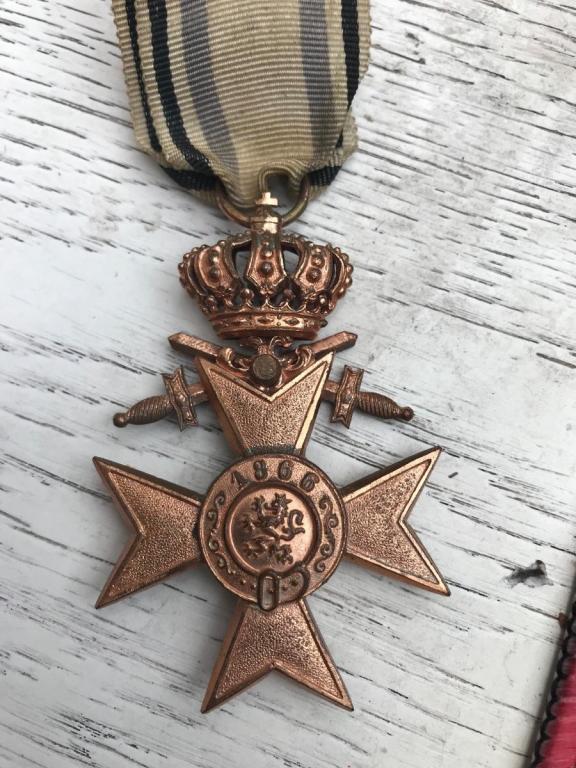
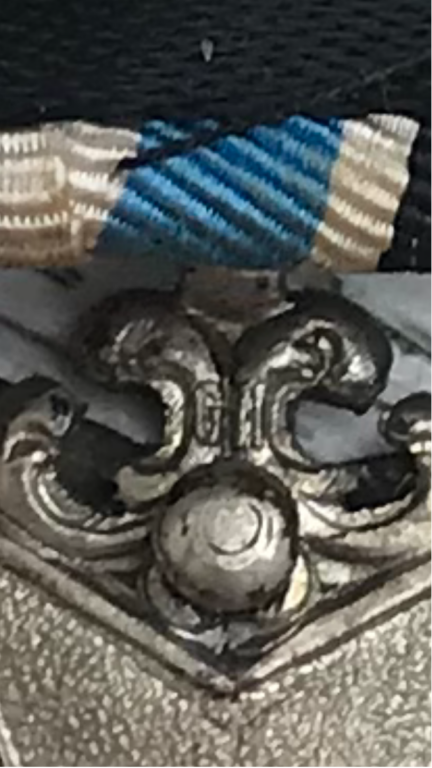
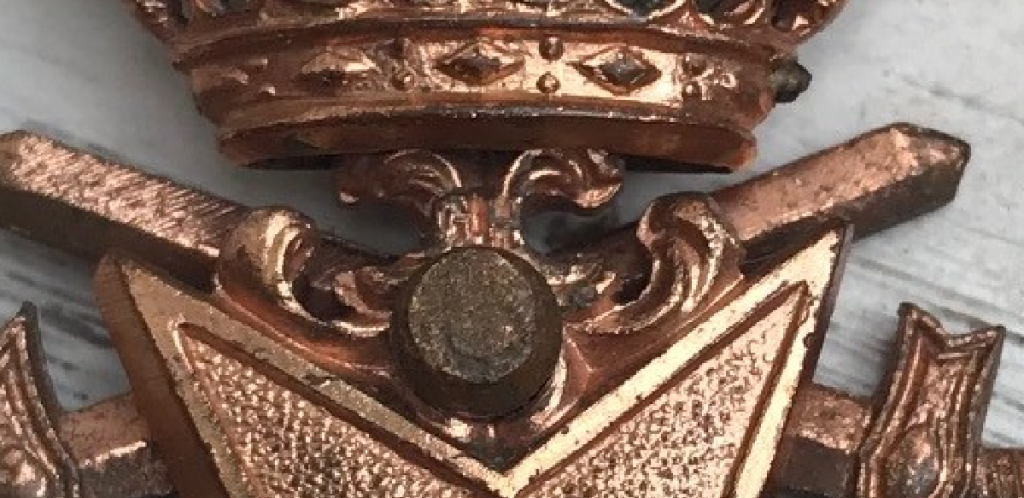
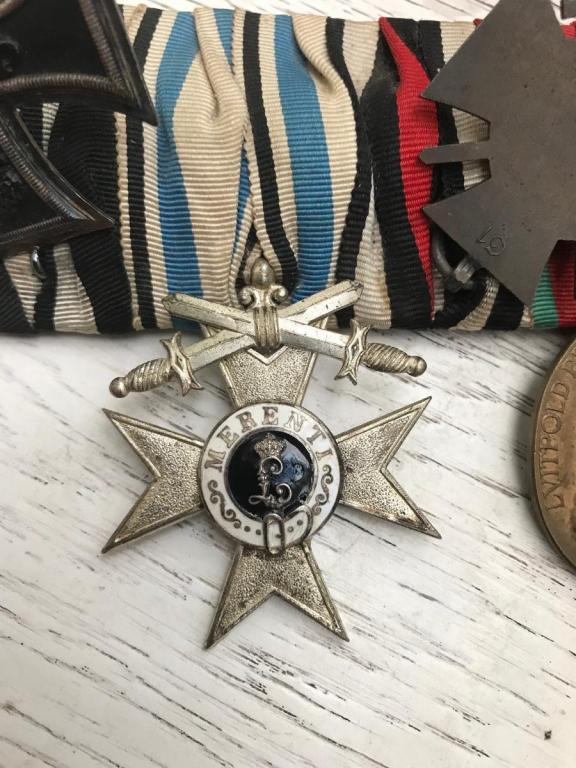
.thumb.jpg.25e42179d150f98fb1b14d7805ec9fcd.jpg)
